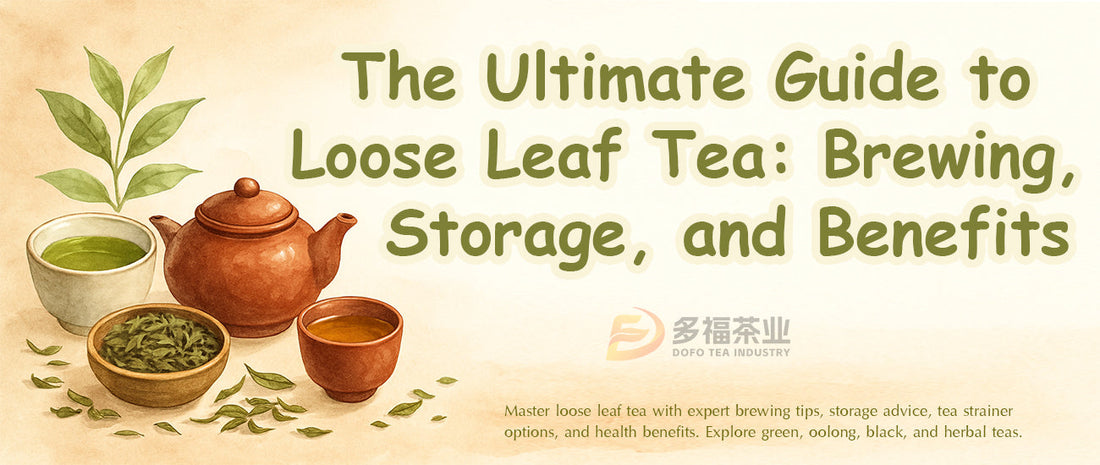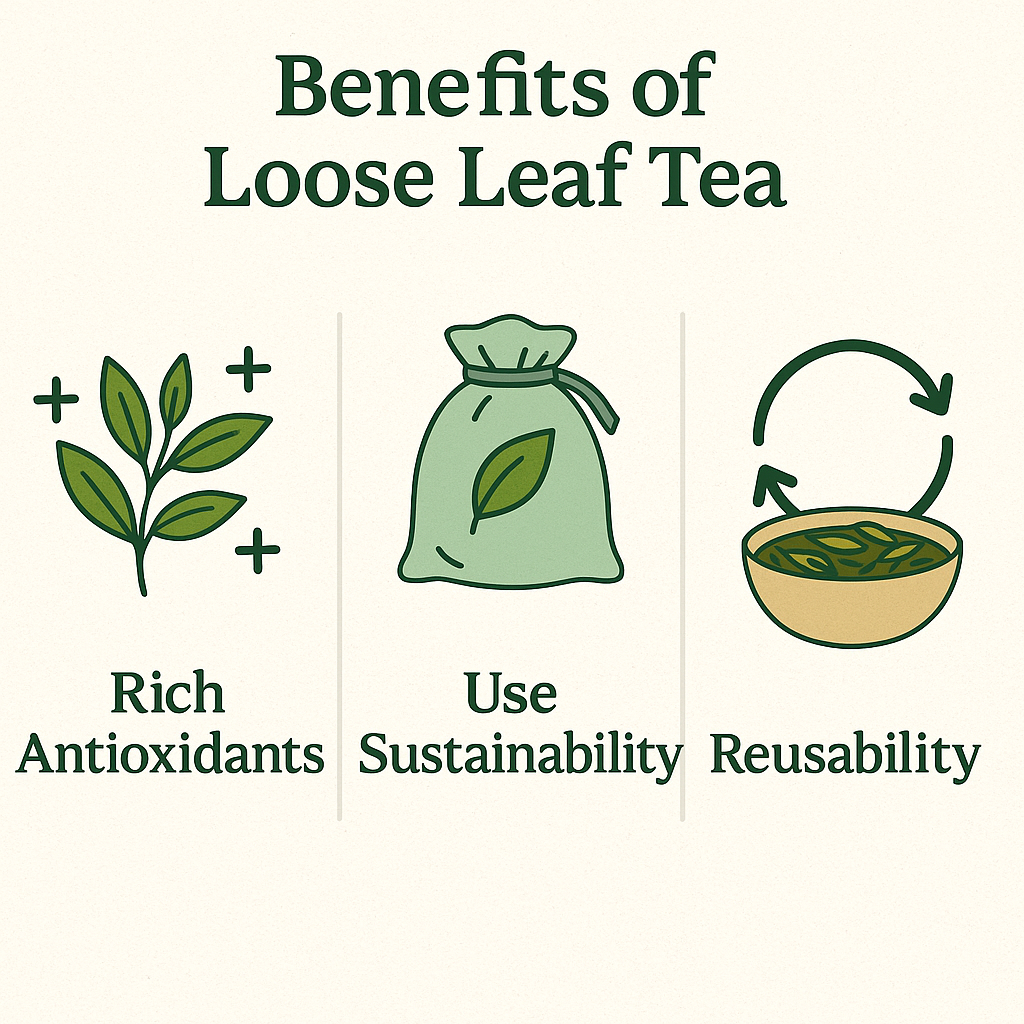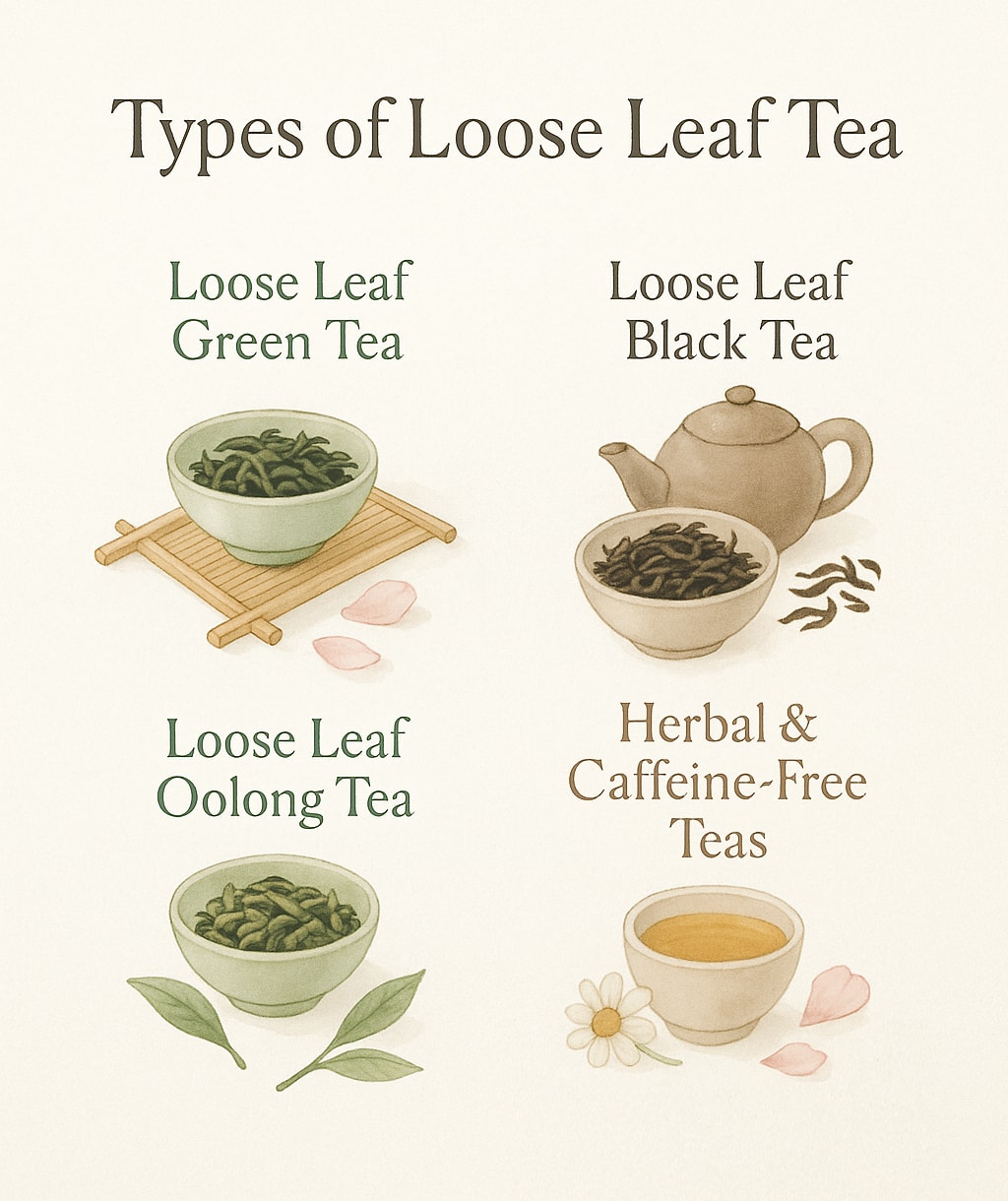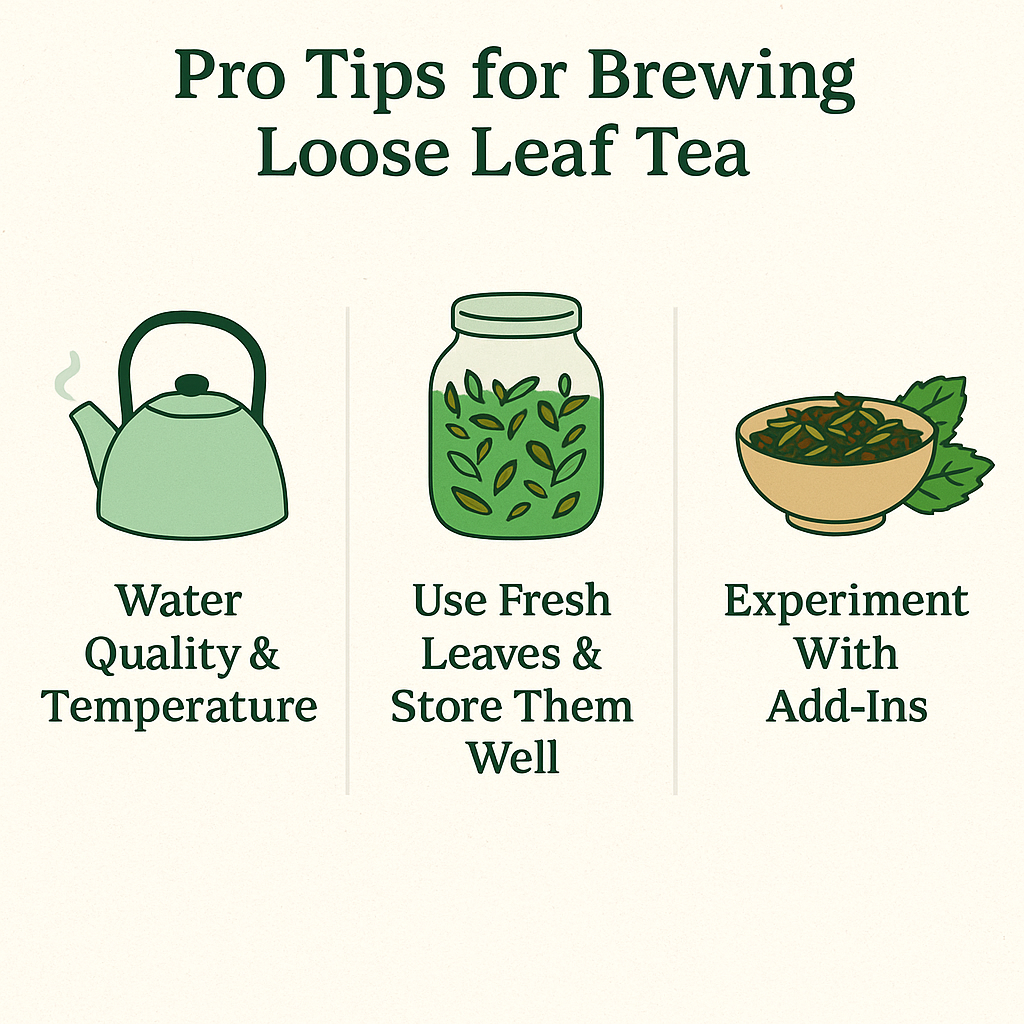
The Ultimate Guide to Loose Leaf Tea: Brewing, Storage, and Benefits
liujiehangShare
Loose leaf tea is more than just a drink—it’s a ritual, a wellness booster, and a flavorful journey for the senses. Whether you're new to tea or a seasoned enthusiast, understanding how to brew, store, and enjoy loose leaf tea properly will help you unlock its full potential.
What Is Loose Leaf Tea?
Loose leaf tea refers to whole or partially broken leaves sold in bulk rather than enclosed in paper tea bags. These leaves are harvested, processed, and dried to preserve their essential oils and complex molecular structure.
When steeped, loose leaf tea leaves unfurl completely, releasing full-bodied flavors and aromas. This allows for a richer and more complex taste experience that bagged teas—often filled with dust and fannings—simply can’t match.
What Makes Loose Leaf Tea Special?
“Only whole leaves can unfurl fully, unlocking layers of flavor and nutrients that cannot be captured in a typical tea bag.”
- Full‑Leaf Quality: Loose leaf tea leaves remain intact, protecting their essential oils and ensuring a balanced infusion.
- Superior Aroma: Whole leaves emit more volatile aromatic compounds, providing a more vibrant sensory experience.
- Nutrient Density: Studies show whole leaves retain higher levels of antioxidants such as EGCG (particularly in loose leaf green tea), promoting wellness and immunity.
Organic Loose Leaf Tea
For those seeking the purest cup, organic loose leaf tea is grown without synthetic pesticides or fertilizers. Certified organic farms emphasize soil health, biodiversity, and sustainable practices. By choosing organic loose leaf tea, you not only protect your health from chemical residues but also support eco‑friendly agriculture.
Benefits of Loose Leaf Tea

Rich Antioxidants
Loose leaf green tea, black tea, and oolong tea are rich in polyphenols like EGCG, which help combat oxidative stress, improve metabolism, and support immune function.
Sustainability
By using bulk packaging and reusable strainers, loose leaf tea greatly reduces waste compared to single-use tea bags. Many brands also use compostable or recyclable materials for packaging.
Reusability
High-quality loose leaves can often be re-steeped multiple times. This means you get more value out of the same amount of tea while enjoying evolving flavor notes with each infusion.
Flavor and Nutritional Advantages
- Rich Antioxidants: Whole leaves—especially green, oolong, and black—contain polyphenols like catechins and theaflavins that neutralize free radicals. According to Harvard T.H. Chan School of Public Health,these compounds may lower heart disease risk and support metabolic health.
- Customizable Caffeine: From caffeine‑free herbal blends to medium‑caffeine black teas, loose leaf tea empowers you to tailor your caffeine intake.
- Superior Taste Profiles: Expect a spectrum of flavors—grassy, floral, fruity, earthy, or spicy—depending on the tea type and origin.
Pro Tip: Many blends incorporate herbs and spices—cinnamon, ginger, or citrus peel—to enhance both taste and health benefits.
Loose Leaf Tea vs. Loose Leaf Tea Bags
While some premium loose leaf tea bags offer decent quality, most tea bags contain fannings or tea dust—smaller fragments that lose flavor quickly.
Loose leaf allows for a more personal and customizable tea-making experience, from water temperature to steeping time and leaf-to-water ratio.
Types of Loose Leaf Tea

Loose Leaf Green Tea
Celebrated for its gentle caffeine and high antioxidant content, loose leaf green tea delivers a fresh, vegetal cup. Favorites include Dragon Well (Longjing), Sencha, and Matcha. Green teas are best steeped at lower temperatures (160–185 °F) to avoid bitterness.
Loose Leaf Black Tea
Fully oxidized, loose leaf black tea offers a bold, malty flavor. Classic varieties such as Darjeeling, Assam, and Yunnan can stand up to milk and sugar or shine solo. Steep at boiling temperature (212 °F) for 3–5 minutes.
Loose Leaf Oolong Tea
Partially oxidized, loose leaf oolong tea strikes a balance between green and black teas. Varieties like Tieguanyin and Oriental Beauty present floral and fruity notes, ideal for multiple infusions.
Herbal & Caffeine‑Free Teas
Herbal blends—chamomile, peppermint, ginger, or rooibos—are naturally caffeine‑free and offer unique soothing properties: digestive support, anti‑inflammatory effects, and gentle relaxation. Steep herbal teas in boiling water for 5–7 minutes.
How to Make Loose Leaf Tea – A Step‑by‑Step Guide
Master these four steps to brew café‑quality tea at home.
Step 1: Heat the Water to the Right Temperature
- Green tea: 160–185 °F (70–85 °C)
- Oolong tea: 185–205 °F (85–96 °C)
- Black/herbal tea: 212 °F (100 °C)
Step 2: Measure Your Loose Leaf Tea
Use 1 teaspoon (~2 g) of loose leaf tea per 8 oz (240 ml) of water. For a stronger brew, boost to 1.5 teaspoons per 12 oz.
Step 3: Steep and Time Properly
- Green tea: 1–3 minutes
- Oolong tea: 2–4 minutes
- Black tea: 3–5 minutes
- Herbal tea: 5–7 minutes
Remove leaves promptly to prevent over‑extraction and bitterness.
Step 4: Pour & Strain with Your Loose Leaf Tea Strainer
Select a high‑quality loose leaf tea strainer—mesh ball infuser, stainless‑steel basket, or a teapot with built‑in filter—allowing leaves to expand fully for maximum flavor.
Pro Tips for Brewing Loose Leaf Tea

Water Quality & Temperature
Use fresh, filtered water and maintain correct brewing temperatures for each tea type.
Use Fresh Leaves & Store Them Well
Store tea in airtight, opaque containers away from light, heat, and moisture to preserve flavor and potency.
Experiment With Add‑Ins
Elevate your tea ritual with lemon slices, a spoonful of honey, fresh mint, or cinnamon sticks.
Does Loose Leaf Tea Go Bad? – Storing It Properly
Exposure to air, light, moisture, and odors accelerates oxidation, diminishing flavor and nutrient content.
Best Containers for Loose Tea
Use dark, airtight tins or ceramic canisters with tight seals. Glass jars are acceptable if stored in a dark cabinet.
Avoiding Moisture, Heat & Light
Keep tea in a cool, dry place—away from stoves, sunlight, and refrigerators unless vacuum‑sealed.
FAQs About Loose Leaf Tea
Q1: How long is loose leaf tea good for?
- Green/White teas: 6–12 months
- Oolong/Black teas: 12–24 months
- Herbal teas: up to 12 months
After these periods, tea remains safe but loses flavor and health benefits.
Q2: Can I reuse loose leaf tea?
High‑quality green and oolong blends can often be steeped 2–3 times, with each infusion offering unique flavor variations.
Q3: Is loose leaf tea stronger than bagged tea?
Yes—because whole leaves release more essential oils and flavor compounds than crushed bagged tea.
Q4: Can I use loose leaf tea in DIY tea bags?
Absolutely—fill reusable muslin or biodegradable pyramid sachets for on‑the‑go brewing.
Q5: How much loose leaf tea should I use per cup?
Standard guideline: 1 teaspoon per 8 oz of water. Adjust upward for larger mugs or stronger taste.
From selecting your favorite loose leaf green tea to mastering the art of brewing and storage, you now have the tools to elevate every cup. Explore Dofo Tea’s premium loose leaf collection and start your journey to exceptional tea enjoyment today!









